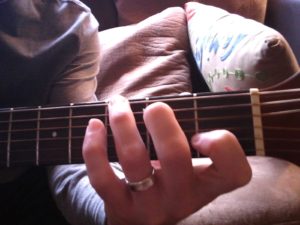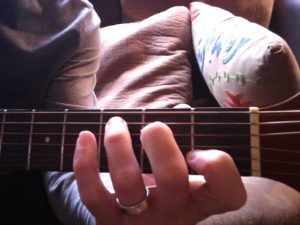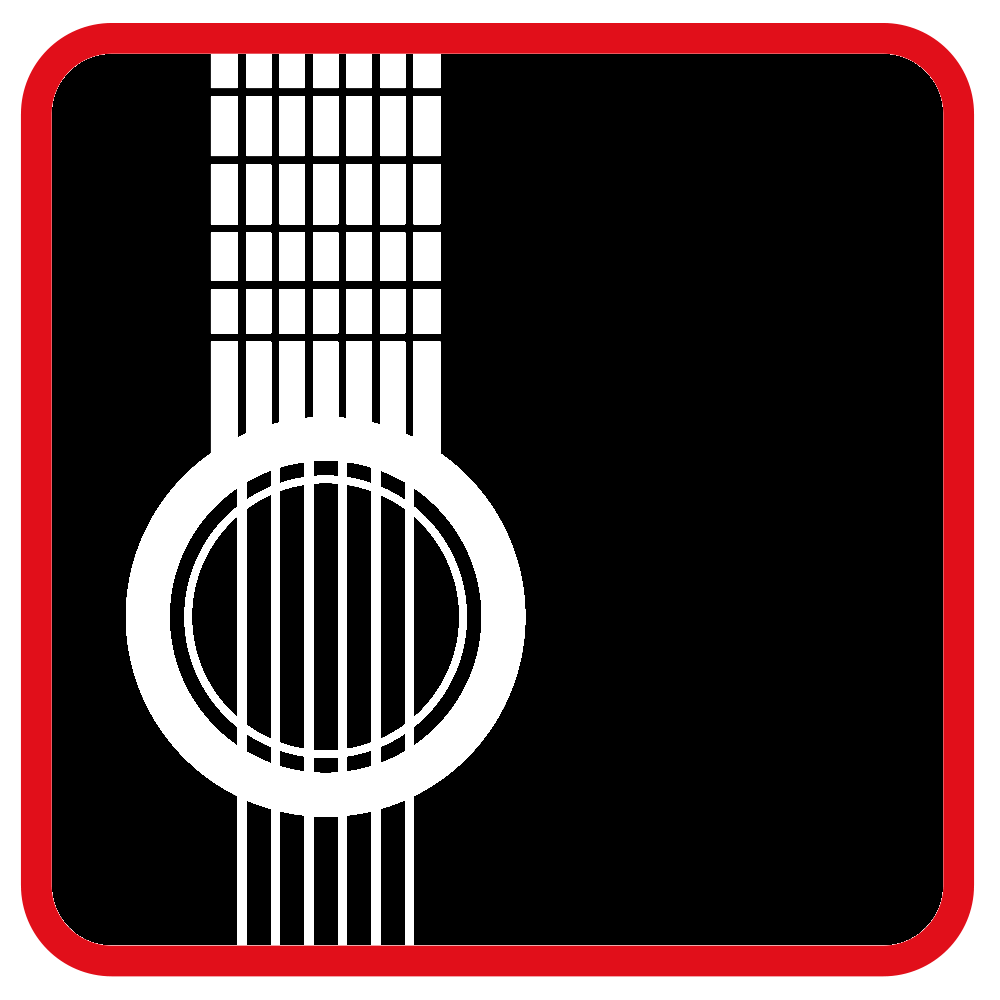
Playing in Keys – Chord Families
Playing in Keys: aka Chord Families
You might be familiar with the idea of a key area or you might have noticed the same group of chords occurring in many different songs (IE C, F, G, and Am). This is no coincidence. Most music is built on what we call ‘functional harmony.’ This is just a fancy term meaning there are groups of chords that belong together and our ears hear a hierarchy within those groups. Within a chord group, there is a chord that sounds like “home” or often the chord that finishes a song or ends phrases within the song. The other chords revolve around this “home” chord and have different relationships with it. For our purposes, we want to hear how the other chords “feel” compared to the “home” chord in terms of tension and resolution. Does the chord in question feel like it really wants to go back to the home chord, does it compliment the home chord, or does it feel like it kind of wants to go back to the home chord but not as strong as the other chords? These are all questions you want to ask yourself as you listen to the relationships between chords. For now, just start with the understanding that there is a chord that sounds like “home”. It is the center of the mini universe of this family of chords.
The Nashville Numbering System (or using Roman Numerals)
As musicians, we create an easy way to communicate this idea of relationships to a “home” chord by numbering the chords in alphabetical order. In other words, we find the “home” chord as our starting point and label it the I chord. In our example, we will call the C chord the I chord. Then we just go up the alphabet and number each letter according to C as the I. So, ii=d; iii=e; IV=F; V=G; vi=a; vii=b and back to I. We only go 7 letters until we reach C again. Pay attention to the difference between upper case and lower case roman numerals – they tell us which chords are minor and which chords are major – something we will use later in the class. For example, in our family of chords beginning with C as the I, the I, IV, and V chords are all major chords. Do you notice what letters fall on those numbers? That’s right, the same chords that pop up over and over again when you are playing a song in C – IV is F and V is G.



If we take a look at the relationships among the chords through the lens of the roman numerals, we have chords I, IV, and V. These three chords make up the majority of the chords found in most genres of music. You can play thousands of songs with just these three chords. Just change your starting letter but keep the relationship and you have numerous song examples. Let’s start with G as our I chord. Now, the IV chord becomes C and the V chord becomes D. Same relationship but relative to the starting letter. You can do this for any starting letter in the musical alphabet; A through G. In the class, we will explore the most common keys played on guitar and become familiar with the physical patterns on the fretboard for each key area.
A quick note: Remember that a chord is built with 3 or more notes. We will find what these 3 notes are when building a chord and how to find them easily on the guitar by recognizing patterns, but for now, just know that the lowest sounding note of a chord in open positions is the root of the chord. In other the words, the first note of the chord shares the same letter as the name of the chord. For example, a C chord is built with C as the first. lowest and most important note. When we identify a chord by playing or hearing it, we are often identifying the root note – in this case, the C note – in order to identify the chord name.
Action Step:
First, listen and learn to identify what sounds like the I chord. Can you hum the note of the chord? Can you hear when the song is not on the chord and then goes back to it? Humming or vocalizing is a great way to internalize sounds and really connect with what you are hearing. Once you become adept at finding the I chord or note, then you are ready to start unlocking the mysteries of song structures and chord progressions, which allows you to understand and learn songs faster by recognizing familiar patterns. Finding the I chord or note is the starting point for improvising and finding the other chords in the song and making sense of the song structure. Throughout the class, we will practice this concept and build upon this understanding to explore improvising and learning songs effectively and efficiently while improving our listening skills. Find out more about the classes and sign up for the upcoming session here.
